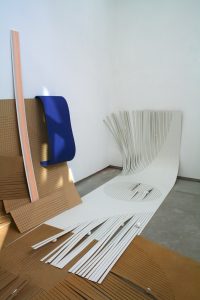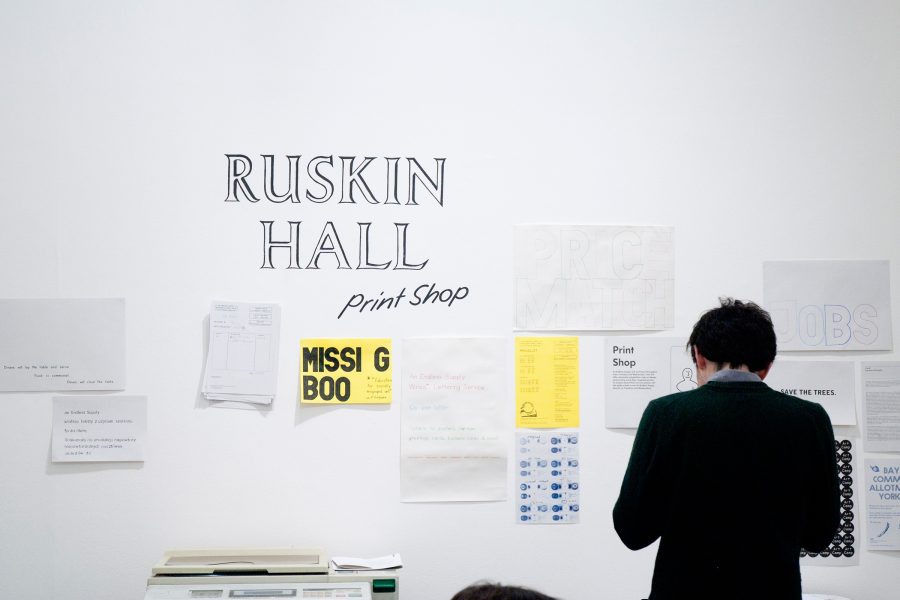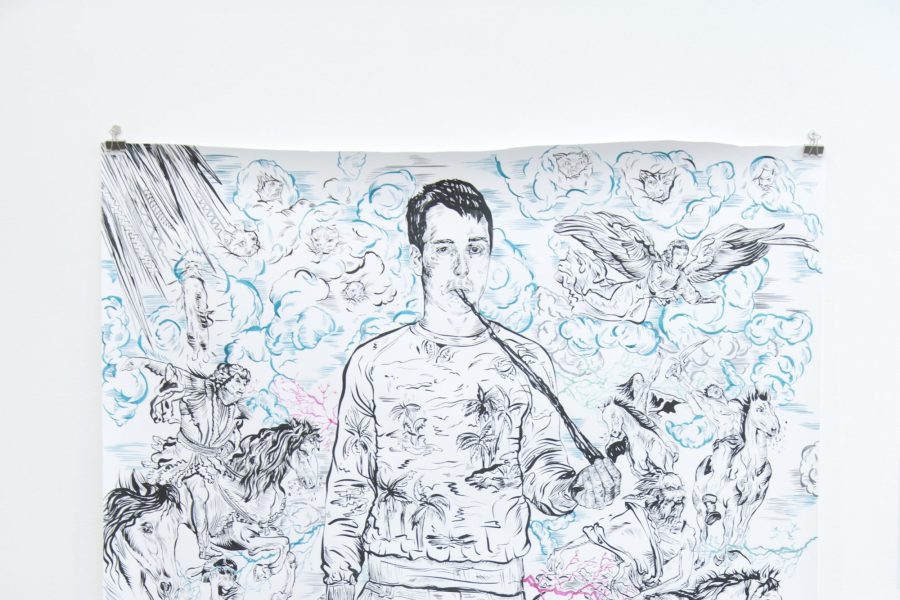I met up with Jerwood Drawing Prize artist Beatriz Olabarrieta to talk about her work, objects talking back and losing control. Beatriz will be in an upcoming exhibition at Wysing art Centre in collaboration with X Marks the Bökship. Further details can be found here.
Have you shown Bolas (the work in the exhibition) before?
Yes it came out of a show I did in Spain. Three weeks before the show the gallery asked me to send an artist statement about what I was making, and I was attempting to write it, then this work came out of that.

So this work came out of trying to write an artist’s text?
Yes, or the impossibility. I just ended up turning it into another work.
I was thinking about how your installations feel like sedimented versions of the videos – you often display them alongside each other so there is a tension between this stasis and movement.
I think the videos are sometimes a way of generating new systems of organizing or better, disorganizing space. For a recent work I tied a pen to an elastic band and it just bounced up and down making these marks, and it was interesting to see the relationship that happened between this performative action and how high and narrow the exhibiting space was. Like an action mimicking an architecture, my body trying to act or reenact that space.

The marbles in the Bolas work are interesting in that they define your body as much as you define them – you’re fighting to control them.
Exactly, they extend the body.
How would you say the idea of drawing relates to your practice?
Drawing is an important aspect of my practice, my work tends to be quite graphic with an interest in line, not only visually but also conceptually. I use it to move from organicity to technology… ummm don’t know if this explains it really well…like fitting and unfitting within the lines.
But this work seems to be about losing control of something…
I’m interested in the idea of losing authorship, when the subject becomes the object and visa versa. I was talking about this the other day, that if you listen to objects they tell you what they do and don’t want to be.
So the object takes on its own agency.
Yes the object becomes performative, I’m interested when sculpture, function and performative space overlap. Some objects become characters, yet you can also see it as a type of stage.
Is the notion of openness important to you?
Very, although it is very difficult, especially when you start to sell the work – this idea of when something is finished can be become quite difficult. But I guess it is an attempt to defy language and imply continuity.
It’s funny to think that what started off as an artist statement quickly became a work about illegibility and then we come back to interviewing you about it. Can you talk more about the distinction between drawing and writing?
I used to do a lot of writing, and previously I worked in theatre so used to write a lot of texts or scripts. Now I find it really difficult to write on my own work. The other day I had to talk on my work at a gallery and I actually started with this video as I thought it summed up the feeling of how I try to process information.
I’m interested in this idea that the materials can answer back. How was the work like to put together, did it come easily?
A compression of a lot of failures, one works on a lot of things and then you get the moment when it all comes together seemingly by itself, it is important to smell when is the moment to let go and allow this to happen, when the ego needs to submit!
Whistler said that it took him a life time of painting to get to the point where he could paint something in 5 minutes!
Yes. The previous year I started making these pieces that people really liked, they consisted of ply wood that was cut so that it could stand freely. It looks super simple but took me years to figure out how to do it! It took me a long time to reduce all that information into one object.

Are there artists that have been important to you?
I´ve been looking recently to Gabriel Kuri, I enjoy the quality of materials he connects. I like Urs Fischer, Rachel Harrison, Mike Kelley, and Franz West… Artists who make objects that release a huge amount of freedom.
What I find great about Franz West is that he take a monumental language and makes these quite dumb funny objects.
Yeah, certainly it is all very serious while we can laugh inside and/or outside our heads.
To come back to this idea of language, how do we start to articulate something that remains beyond language – that resists it?
If the objects could speak they would answer to that, but you would need a translator and a translator of the translator too.
You can trace a history from Kindergarten games in the 19th century to early Modernism. There is an interesting overlap between geometric formalism and pre-literate learning. Mondrian’s paintings look remarkably similar to children’s building blocks!
Yeah, I collect these blocks! One of my favourite art works ever is John Baldessari’s Teaching a Plant the Alphabet. I don’t know whether the plant is the art work, or the artist is a plant.
This playfulness seems important, and of course to come back to the work in the exhibition, marbles are a kids game. When I first saw the work I thought you were trying to draw a face, I couldn’t help but see things in the scribbles. Is making art an attempt to break these habits? Of always seeing the same thing…
Yes, I studied music for a long time and people always bring that up. Music is really important in terms of the mathematical order, there is a structure but it can be broken. I like it when sounds become really messy. Jazz or electronic music, for instance, isn’t a narrative from left to right but it branches out. In that way its Deleuzen, and rhizomatic.
It’s the difference between a conversation and a speech, a speech is a bit like a painting and a conversation is more like a drawing.
You’re less in charge of a conversation, it can go off on tangents, and that is very analogous to making art. Then you have to work backwards to try and map it. Everything that I do is connected somehow, and I have to cut a chunk out of it when I show it.

So in a sense each installation is a component of a larger ongoing work?
Yes like cutting off parts of my own ever expanding body. I like the fact its elements can be continually reconfigured. Each work is a part of a greater whole. I like to think of my work as an organism, it moves and spreads like moist moss.
This comes back to the idea of agency of the object.
For a recent show in Spain, I made a video of elements of the installation being photocopied, and then projected this videos from the works themselves. It was as if the installation started to reproduce itself, endlessly.
Like the installation had developed a tumour?
The machine can start to replicate itself, I can remove myself from it and it could just carry on without me. I become the work’s employee!
The work becomes embodied…
Yes, a friend suggested I read Graham Harman’s The Quadruple object.
This is massively influential at the moment.
Back to the object…
Well it comes back to what you said about losing authorship – of losing control in some way so that you’re surprised by what comes back.
Big time.

